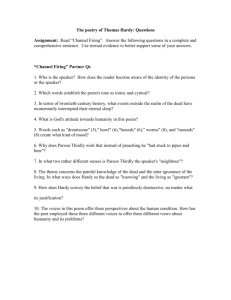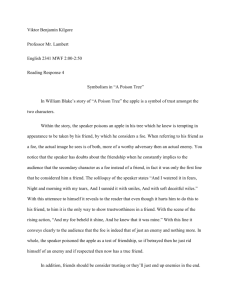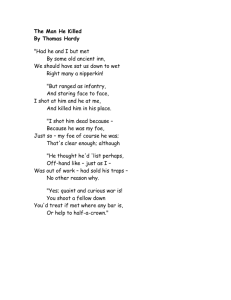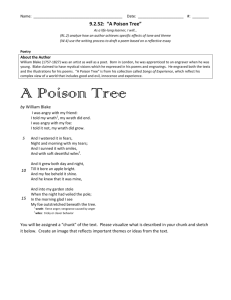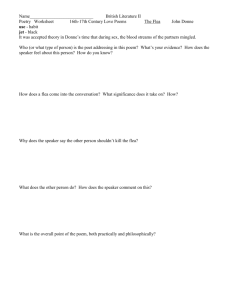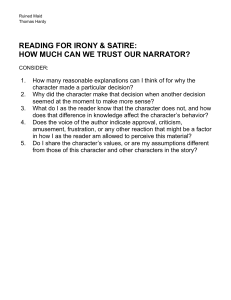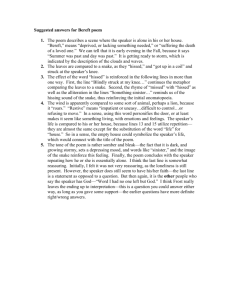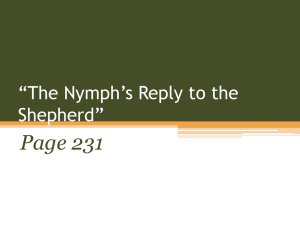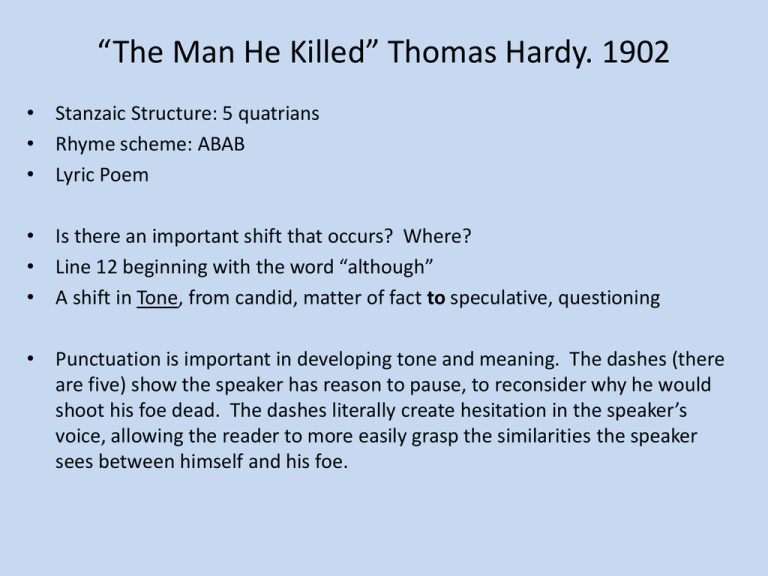
“The Man He Killed” Thomas Hardy. 1902
• Stanzaic Structure: 5 quatrians
• Rhyme scheme: ABAB
• Lyric Poem
• Is there an important shift that occurs? Where?
• Line 12 beginning with the word “although”
• A shift in Tone, from candid, matter of fact to speculative, questioning
• Punctuation is important in developing tone and meaning. The dashes (there
are five) show the speaker has reason to pause, to reconsider why he would
shoot his foe dead. The dashes literally create hesitation in the speaker’s
voice, allowing the reader to more easily grasp the similarities the speaker
sees between himself and his foe.
“The Man He Killed” continued
• Similarities to Cold Mountain?
• Perhaps in stanza 5. Inman tells the goatwoman he hardly remembers why
he enlisted.
• Differences from Cold Mountain?
• The speaker’s impression of war, while thoughtful, does not reveal any of
the trauma or emotional scarring that is central to Inman’s (or Frazier’s)
impression of war. In countless ways, Frazier implies that war is hell. The
speaker of Hardy’s poem, after momentarily musing on what his foe’s life
might have been like, simply dismisses war “quaint and curious”.

